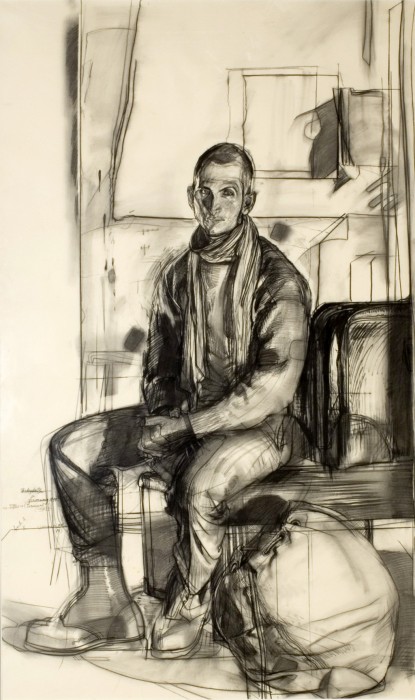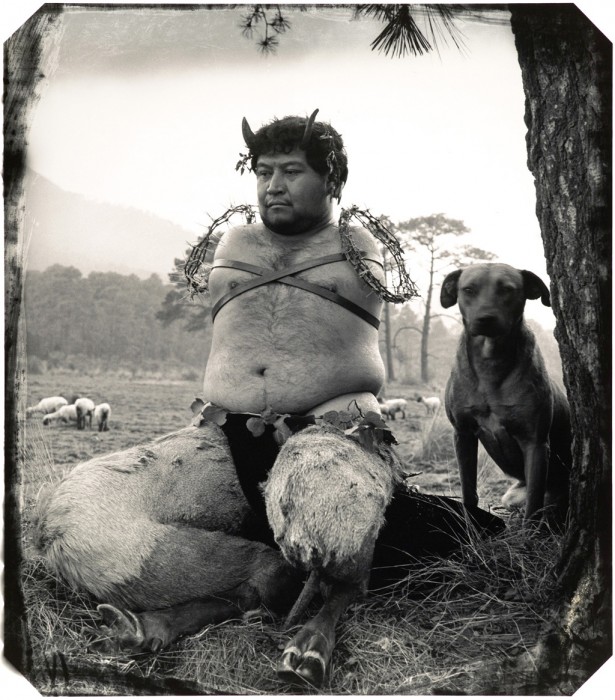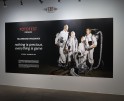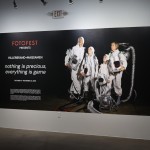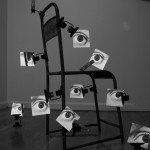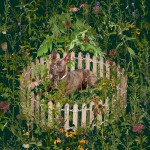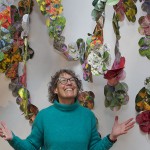Twin Visions: Joel-Peter Witkin and Jerome Witkin

@JOEL-PETER WITKIN
FACE OF A WOMAN, 2004
Gelatin Silver Print
All images are Courtesy of Jack Rutberg Fine Arts, Los Angeles
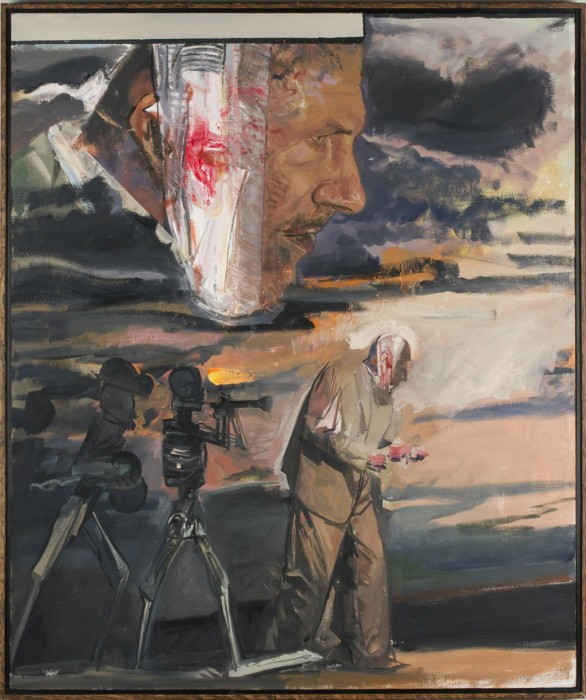
@JEROME WITKIN (b. 1939)
VINCENT AND HIS DEMONS III, 2012
Oil and Mixed Media on Canvas
All images are Courtesy of Jack Rutberg Fine Arts, Los Angeles
Identical twins hold a psychic connection–stories of twins separated at birth leading mirrored lives are not uncommon. This is a story about twins, both artists, that led separate lives for 50 years, estranged and not communicating, but each creating work at a master level with threads of similarities running through their work. There is an amazing exhibition in Los Angeles, Twin Visions, at the Jack Ruthberg Gallery, that, for the first time in five decades, brings together painter Jerome Witkin and photographer Joel-Peter Witkin. This exhibition, running through May 3, 2014, represents a historical first, as both artists have garnered remarkable recognition over their respective careers yet have never shown in the same place at the same time. The brothers are acknowledged as “two of the foremost contemporary artists in their respective genres: Jerome Witkin is a painter cited by many critics and curators as the outstanding narrative painter working today, and Joel-Peter Witkin is equally regarded as a master of his genre – a groundbreaking photographer famous for masterfully conjuring his uniquely surreal images.”
“Twin Visions: Jerome Witkin & Joel-Peter Witkin” brings to light two outstanding contemporary artists whose psychological studies and complex tableaus place them amongst the great heroic artistic traditions by depicting themes that are at once historic, personal and deeply psychological. The common threads in their work are as distinctive as are their differences and individuality. The exhibition also calls into question the notions of their shared and disparate visions and even perhaps the notion of genetic pre-disposition to creativity. History has been populated with great numbers of artistic families – Marcel Duchamp’s siblings Jacques Villon, Raymond Duchamp-Villon and Suzanne Duchamp come to mind, as do art-dynastic families going back centuries like the four generations of Bruegels in the 16th century, and before them, Lucas Cranach and Hans Holbein and their sons.
Jerome Witkin and Joel-Peter Witkin stand in contrast as identical twins both having near cult-like admiration of their peers as they have simultaneously achieved significant recognition while evolving apart.
Joel-Peter Witkin is renowned as the creator of elaborately staged and often erotically charged scenes exploring grand themes of religion, sex and mortality. His provocative imagery has created a sensation since early in his career in the 1960s and particularly in museum exhibitions in the early 80s at the Stedelijk in Amsterdam and San Francisco Museum of Modern Art. He was afforded a retrospective survey at the Guggenheim Museum in 1995. Recent major exhibitions include the Bibliotheque Nationale in Paris, and the Bibloteca Nacional de Chile, Santiago. Critically, his riveting works elicit controversial and dramatic response, well typified by critic Grace Glueck’s 2006 New York Times review where she states: “The calculated madness of Joel-Peter Witkin’s photographs conveys a sense of 19th-century horror, like the dreamworks of the Symbolist painter Gustave Moreau… there’s a master of surrealistic photography at work.” His photographs are in the permanent collections of the National Gallery, MOMA, The Metropolitan Museum, the Getty, Victoria and Albert Museum, Centre Georges Pompidou, among many others. Among his numerous awards, he was the recipient of the Commandeur d’Ordre des Arts et des Lettres de France in 2000.
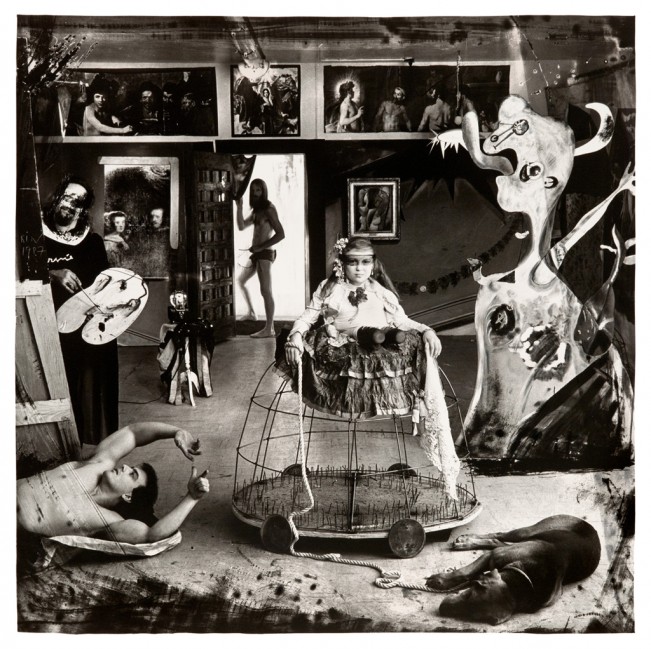
©JOEL-PETER WITKIN
LAS MENINAS, 1987
Gelatin Silver Print
All images are Courtesy of Jack Rutberg Fine Arts, Los Angeles
Jerome Witkin stands apart in the realm of contemporary narrative painting. The recipient of many prizes, including two Ford Foundation Grants, a Guggenheim, and a Pulitzer Fellowship, his masterful draftsmanship and virtuoso painting has elicited a devoted following among his fellow artists. He has been the subject of myriad exhibitions, most recently a touring museum retrospective originating in 2011, celebrating his forty years at Syracuse University. His paintings, often on a grand scale, have been cited by many as being among the great narratives in contemporary art, often dealing with apocalyptic events. Critically, Jerome Witkin has been likened to Lucien Freud, Manet, Ingres, and Goya for both his technical mastery and psychological insight. The Los Angeles Times hailed Witkin as an “indelible, pungent force,” and cited his work as “. . . a breakthrough in post-Cold-War art.” Art in America notes his “…Action-Painting technique, tour-de-force draftsmanship and emotionally loaded narration.” Art historian Donald Kuspit called Witkin’s works “dreams in the grand visionary manner of the Old Masters . . . painted with the rhapsodic abandon of pure sensation . . .unequivocal masterpieces.” Art critic Kenneth Baker declared: “Witkin’s only peer is Lucien Freud.” His works are in the permanent collection of museums internationally, including the Uffizi Gallery in Florence, TheFine Arts Museums of San Francisco, the Hirshhorn Museum in Washington, D.C., Metropolitan Museum of Art in New York and numerous institutions throughout America.
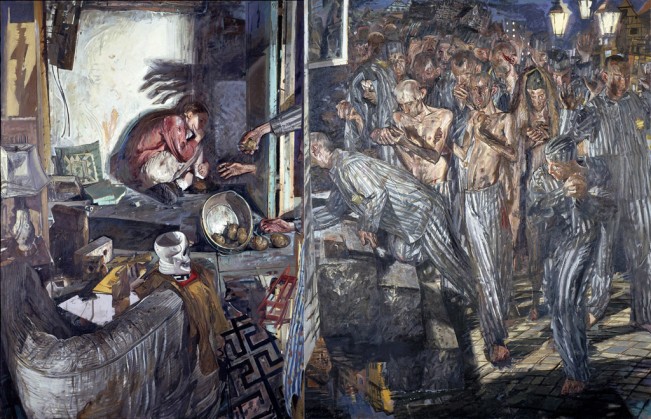
©JEROME WITKIN (b. 1939)
THE GERMAN GIRL, 1997
Oil on Canvas
All images are Courtesy of Jack Rutberg Fine Arts, Los Angeles

©JOEL-PETER WITKIN
THE RAFT OF GEORGE W. BUSH, 2006
Gelatin Silver Print
All images are Courtesy of Jack Rutberg Fine Arts, Los Angeles
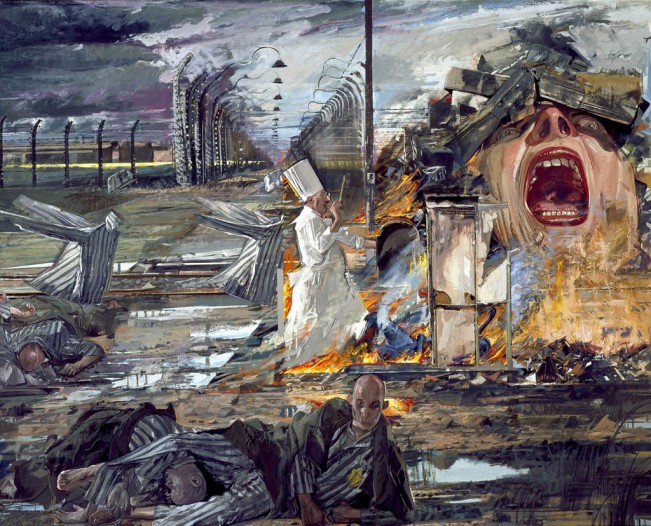
©JEROME WITKIN (b. 1939)
A JEW IN A RUIN, 1990
Oil on Canvas
All images are Courtesy of Jack Rutberg Fine Arts, Los Angeles
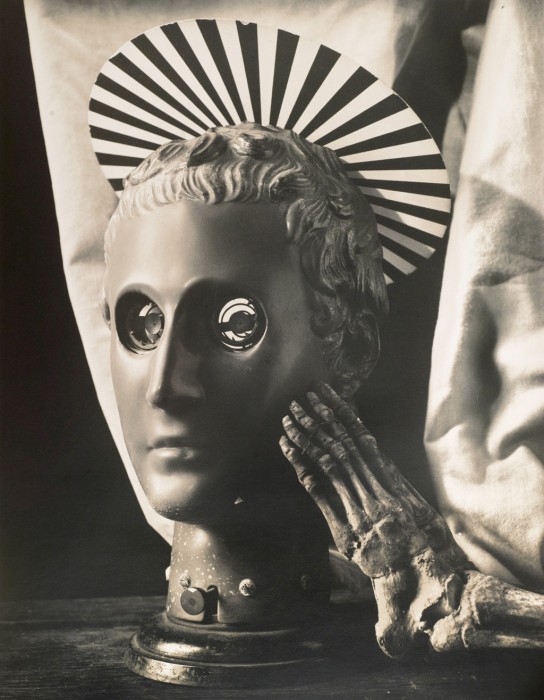
©JOEL-PETER WITKIN
VIENNA EYE PHANTOM, PHILADELPHIA, 1990
Gelatin Silver Print
All images are Courtesy of Jack Rutberg Fine Arts, Los Angeles
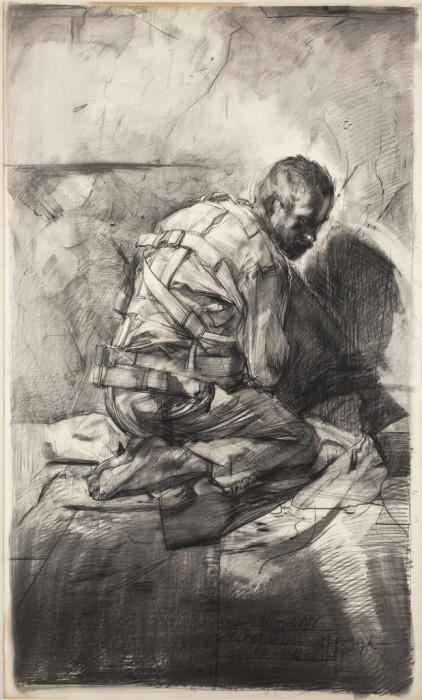
©JEROME WITKIN
VINCENT, 1988
Charcoal on Paper
All images are Courtesy of Jack Rutberg Fine Arts, Los Angeles
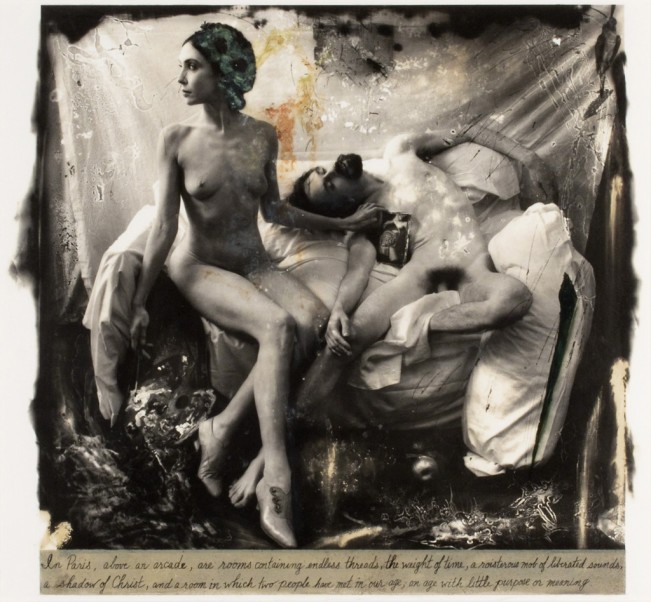
©JOEL-PETER WITKIN
ABOVE THE ARCADE, 2013
Gelatin Silver Print with Color and Encaustic
All images are Courtesy of Jack Rutberg Fine Arts, Los Angeles
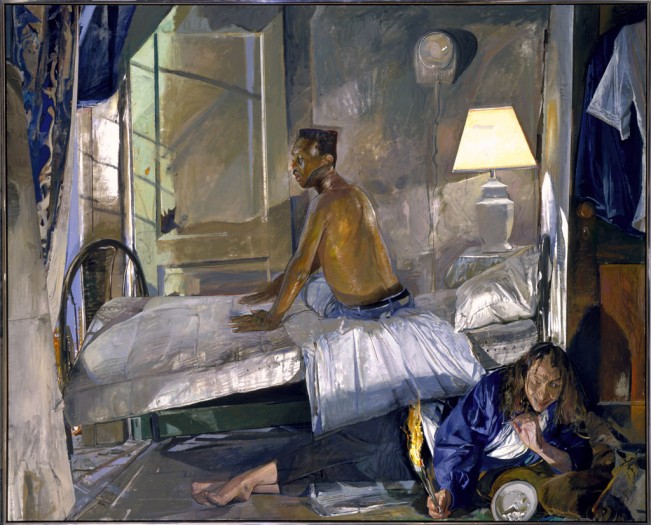
©JEROME WITKIN (b. 1939)
CRACK HOUSE, 1990
Oil on Canvas
All images are Courtesy of Jack Rutberg Fine Arts, Los Angeles
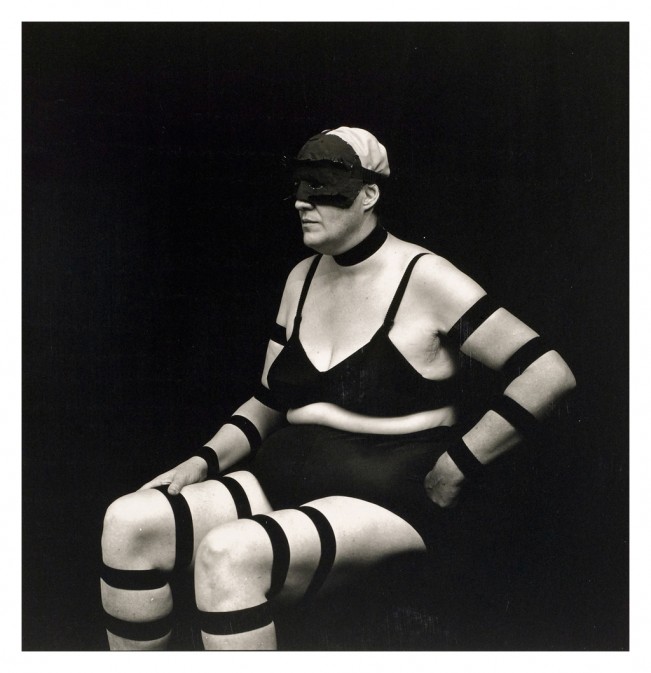
©JOEL-PETER WITKIN
ELIZABETH D., 1975
Gelatin Silver Print
All images are Courtesy of Jack Rutberg Fine Arts, Los Angeles
Posts on Lenscratch may not be reproduced without the permission of the Lenscratch staff and the photographer.
Recommended
-
Ricardo Miguel Hernández: When the memory turns to dust and Beyond PainNovember 28th, 2025
-
Pamela Landau Connolly: Columbus DriveNovember 26th, 2025
-
Interview with Maja Daniels: Gertrud, Natural Phenomena, and Alternative TimelinesNovember 16th, 2025
-
Robert Rauschenberg at Gemini G.E.LOctober 18th, 2025
-
Hillerbrand+Magsamen: nothing is precious, everything is gameOctober 12th, 2025

